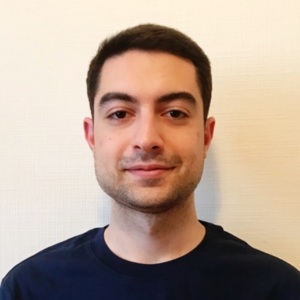Enhanced Flexible Mold Lifetime for Roll‐to‐Roll Scaled‐Up Manufacturing of Adhesive Complex Microstructures
Bioinspired Microstructured Adhesives with Facile and Fast Switchability for Part Manipulation in Dry and Wet Conditions
Smart Materials for manipulation and actuation of small-scale structures
3D nanofabrication of various materials for advanced multifunctional microrobots
Liquid Crystal Mesophase of Supercooled Liquid Gallium And Eutectic Gallium–Indium
Machine Learning-Based Pull-off and Shear Optimal Adhesive Microstructures
Information entropy to detect order in self-organizing systems
Individual and collective manipulation of multifunctional bimodal droplets in three dimensions
Microrobot collectives with reconfigurable morphologies and functions
Self-organization in heterogeneous and non-reciprocal regime
Biomimetic Emulsion Systems
Giant Unilamellar Vesicles for Designing Cell-like Microrobots
Bioinspired self-assembled colloidal collectives drifting in three dimensions underwater
Multiscale Modelling of Ultrasound Neuromodulation in the Human Brain – From Neuron to Brain

Ultrasound-based neurostimulation (UNM) is an emerging clinical neural intervention technology for treating neurological and psychological disorders. Despite the growing interest in UNM, challenges remain, including a lack of knowledge of its underlying mechanisms and recent reports of off-target sensory effects during direct neuromodulation. Motivated by the electromechanical complexity involved in achieving large-scale whole-brain simulation from current spatial statistical models of ion channels, in Phase I of the study, we built, calibrated, and validated experimentally a simple neuronal membrane model combining Hodgkin-Huxley (HH) and Poisson-Nernst-Planck (PNP) models. With this simple computational model, combined with forward and inverse computational models of the human head, we aim to derive valuable insights that will pave the way for the responsible and effective use of UNM in clinical neuroscience. Our project consists of three main work packages to create a clinical simulation tool for UNM. In the project's first step, we will collect neural activity information from neuronal populations under different UNM frequencies and amplitudes. We will then implement these results into the computational model of the whole brain. By combining mechanical and electrical activity maps of neuronal populations from different brain regions, we plan to inhibit off-target sensory effects of UNM. Finally, we will validate our whole brain simulation model with a phantom brain model by constructing an ultrasound array for precise local neurostimulation. At the end of the project, we will better understand the complex mechanisms of UNM's off-target effects, and the computational model of UNM will allow it to be used similarly to other transcranial neurostimulation methods, including transcranial magnetic and electrical stimulation.
Members
Publications


